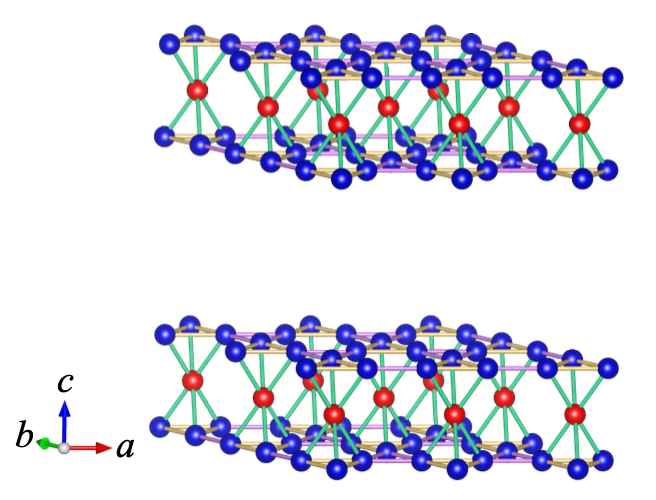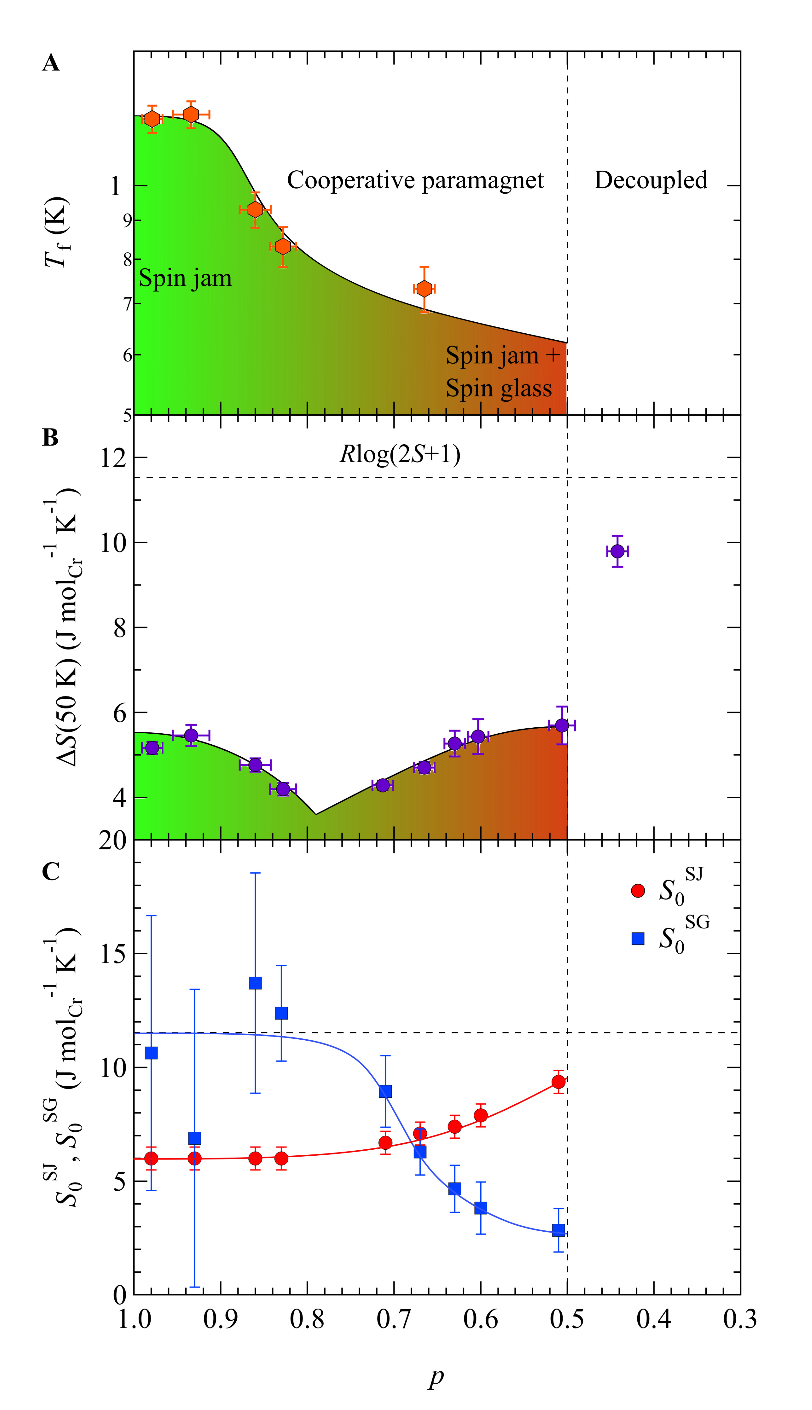

Condensed matter physicists have long been puzzled by the enigmatic missing entropy observed in frustrated magnets, where the measured entropy falls short of the expected maximal value. While some have attributed this shortfall to entropy that might further increase or release beyond the accessible temperature range, our work proposes a groundbreaking alternative. We have discovered that a finite zero-point entropy due to numerous possible ground state configurations could be the cause of this missing entropy in frustrated magnets, leading to the establishment of novel exotic magnetic states.
A previous theoretical study of Ba2Sn2ZnGa3Cr7O22 (BSZGCO) and SrCr9pGa12-9pO19 (SCGO) has revealed a macroscopic ground state degeneracy that results in a finite magnetic zero-point entropy, leading to a magnetic glassy state known as a "spin jam". What's even more fascinating is that the zero-point entropy of spin jam is found to scale with the boundary length of the magnetic domain, rather than its volume. However, this perimeter-scaling zero-point entropy has so far not been confirmed in real materials. In this work, we present the first compelling experimental evidence that confirms that the observed entropy shortfall in BSZCGO is indeed due to the perimeter-scaling zero-point entropy of spin-jam. We further elucidate that the observed variation of zero-point entropy with spin density can be accurately described by the spin-jam state’s perimeter scaling behavior combined with the characteristic spin-density dependence of the zero-point entropy of the spin-glass state.
Our findings on the perimeter-scaling zero-point entropy of spin jam in the triangular network of bipyramids of spins in BSZCGO have significant implications for the understanding of frustrated magnets and can potentially shed light on the glassy states of other magnetic systems with densely populated spins. We believe that our work presents a compelling and groundbreaking contribution to the field of condensed matter physics and would greatly enhance the body of knowledge in this area.


Reference
C. Piyakulworawat, A. Thennakoon, Junjie Yang, H. Yoshizawa, D. Ueta, T. J Sato, Kuan Sheng, Wei-Tin Chen, Woei-Wu Pai, K. Matan, S.-H. Lee, Physical Review B, 109, 104420 (2024) [link][arXiv:2303.17871]